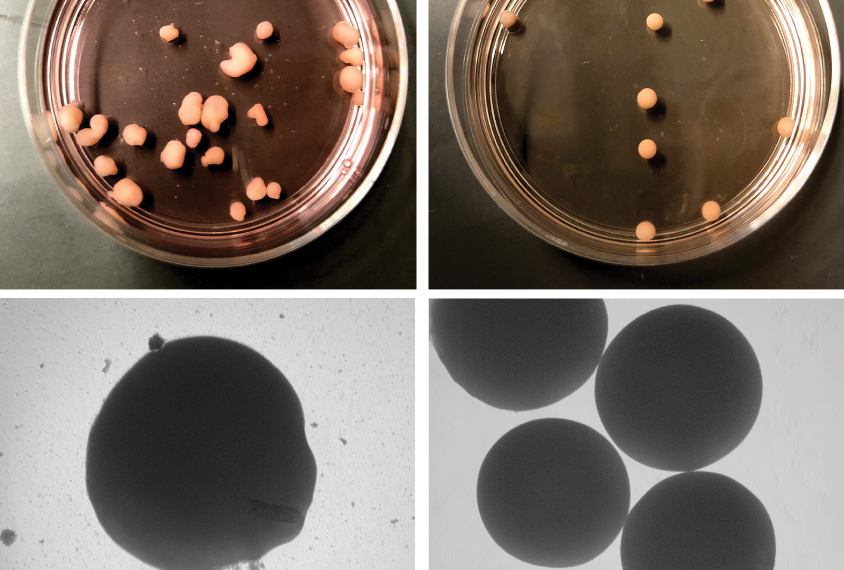
New recipe yields set of strikingly similar brain organoids
A new method enables scientists to grow organoids that reliably reproduce the diversity of cells at the brain’s surface.
A new method enables scientists to grow organoids that reliably reproduce the diversity of cells at the brain’s surface1.
Brain organoids are tiny bundles of neurons and other brain cells grown from stem cells. They mimic elements of the human brain and may help researchers understand how autistic people’s brains develop.
But these mini models tend to grow in unpredictable ways, making it difficult for scientists to compare the results of tests in different batches.
In the new study, the researchers found a more uniform way to grow organoids. They developed a chemical recipe that directs stem cells to form the mix of cells in only the fetal brain region that will become the cerebral cortex.
After six months, organoids grown in this way are slightly smaller than whole-brain organoids, but they have a more consistent overall shape.
Virtually indistinguishable:
The researchers also scored the organoids’ similarity based on the proportions of cell types in each. The whole-brain organoids scored 0.39, indicating significant variation among them. The cortical organoids scored 0.68 — a degree of similarity comparable to brain tissues from different people, the researchers say. Overall, 95 percent of 21 organoids produced a “virtually indistinguishable compendium of cell types,” the researchers reported 5 June in Nature Letters.
The researchers also discovered that the cortical organoids developed in ways that mirror the growing fetal cerebral cortex. For instance, the proportion of astrocytes — star-shaped cells that support neurons — increased between three and six months of growth, as it does during normal development.
The cortical organoids become more complex as they develop: The researchers identified 11 cell types at three months of growth and 13 at six months.
The new protocol could give scientists a reliable set of organoid models for studying brain conditions such as autism and for testing treatments, the researchers say.
References:
- Velasco S. et al. Nature 570, 523-527 (2019) Abstract
Recommended reading

Among brain changes studied in autism, spotlight shifts to subcortex
Home makeover helps rats better express themselves: Q&A with Raven Hickson and Peter Kind
Explore more from The Transmitter

Dispute erupts over universal cortical brain-wave claim
Waves of calcium activity dictate eye structure in flies

